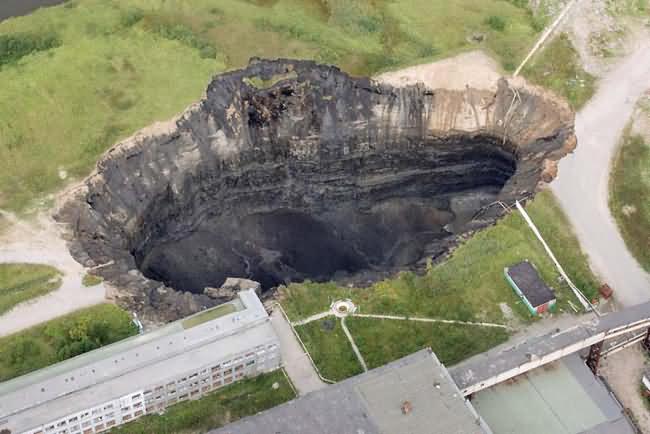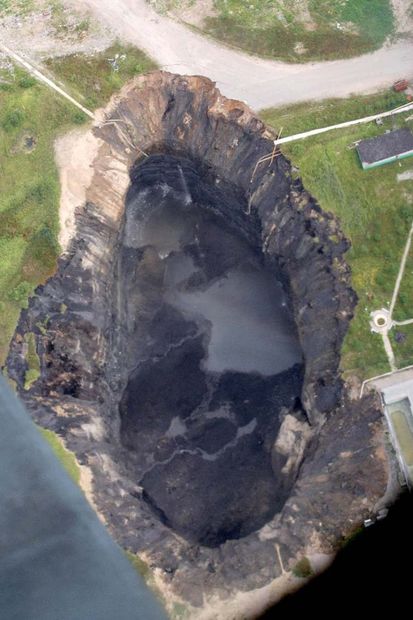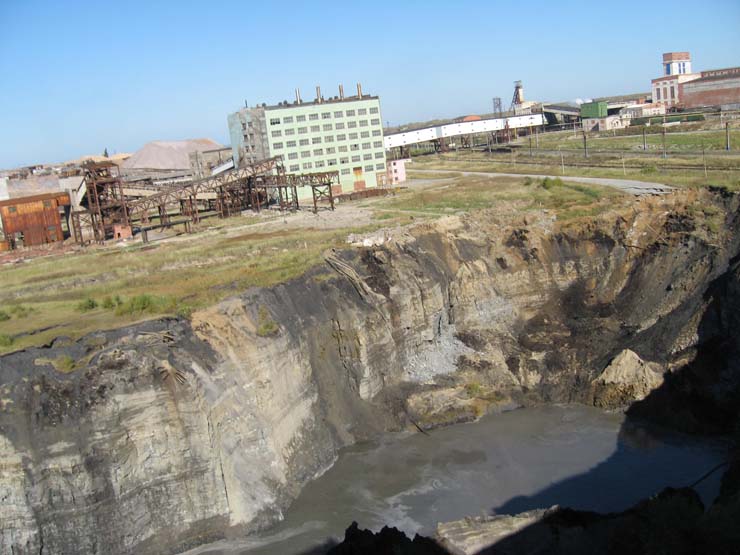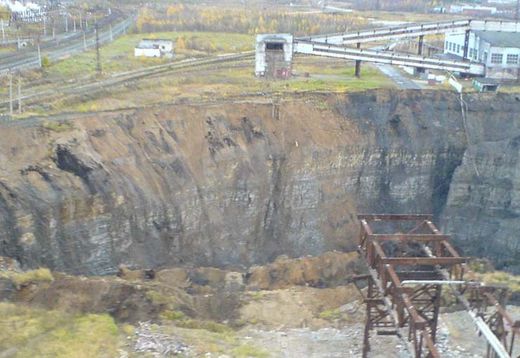
Dmitry Rybolovlev, the Russian fertilizer tycoon who in February bought the most expensive apartment ever sold in New York City - the $88 million penthouse at 15 Central Park West - may have done a lot for real estate values there. But here in this old mining city in the Ural Mountains, where he made his fortune, not just property values, but properties too, have been plunging.
Sinkholes are common hazards in mining regions, plaguing areas where miners have burrowed into layers of soluble minerals and accidental floods have followed. But in Berezniki, as often happens in Russia, the problem has been magnified by past practices in which safety was not always the foremost concern.
In the West, mines are usually located far from populous areas, to reduce the risks of sinkholes to homes and other buildings. But Berezniki, a city of 154,000 that began as a labor camp, was built directly over the mine - a legacy of the Soviet policy of placing camps within marching distance of work areas.
And so Berezniki is afflicted by sinkholes, yawning chasms hundreds of feet deep that can open at a moment's notice. So grave is the danger that the entire city is under 24-hour video surveillance. On a screen in the command center late last year, one such hole appeared as a small dark spot in a snowy field in the predawn hours, immediately threatening to suck in a building, a road and a gas station.
"I looked and said, 'Wow, a hole is forming,' " recalled Olga V. Chekhova, an emergency services worker who monitors the video. This was a small one by the standards of Berezniki, which has had three in the past four years. In fact, it has since been called "The Tiny One."
While scientists have so far successfully predicted each sinkhole, the chasms can open with astonishing speed. On Dec. 4, as Ms. Chekhova watched the dark spot on her screen expand, witnesses began calling an emergency number for reporting sinkholes. They had heard a loud swooshing noise.
As the police cordoned off the area that day, dirt and snow tumbled in. Before noon, the sinkhole was 25 yards across.
Berezniki's problems have been traced to October 2006, when a freshwater spring began flowing into the mine, where potash fertilizer is extracted from salt lying 720 to 1,500 feet below the surface. The problem is that the walls and pillars of salt that miners had left to support the ceilings of huge underground caverns began to dissolve.
"Imagine putting a sugar cube in a cup of tea," Mikhail A. Permyakov, the chief land surveyor for Uralkali, the company that owns the mine, said in an interview. "That is what happened under Berezniki."
Mining engineers first tried to maintain the supports by pumping in saltwater, intending to raise the salinity of the floodwater to the saturation point before the structure collapsed, but that did not work.
After that, the local government adopted the policy in effect today, of careful observation and early warning: geologists, surveyors and emergency personnel use a panoply of high-technology monitors. These include the video surveillance system, seismic sensors, regular surveys and satellite monitoring of the changes in altitude of roofs, sidewalks and streets.
"We will fight the holes with science," the mayor, Sergei P. Dyakov, said in an interview. The city will not need to relocate, he said, because engineers believe that no new holes will open. Much of the mine was filled before the flood, he said, and the sinkholes occurred in an anomalous area that had not been filled in.
But federal officials and company executives are debating whether to relocate the entire city to the opposite bank of the Kama River, where the bedrock is solid.
The largest hole opened in July 2007. Experts at Uralkali say it may be the largest manmade sinkhole in the world. Residents, who have given all the holes nicknames, call it "The Grandfather."
The municipal authorities were compelled to evacuate about 2,000 people from nearby apartment blocks, at great expense. The Grandfather is now 340 yards wide and 430 yards long, and it plunges right to the salt strata underneath the city - 780 feet, or the equivalent of 50 stories, straight down. It partly destroyed a warehouse near its edge.
The next hole appeared on a snowy night in November 2010, underneath a railroad siding. As dirt funneled in, the railroad tracks remained suspended over the abyss for a time. Then a boxcar tumbled in. That hole became known as "the Young One." It sucked in a row of storage sheds and a parked Moskvich passenger car.
"We are afraid but don't know what to do," Tatyana Shishkina, a city resident, said in an interview in her living room, where the ceiling is cracked and appears ready to cave in. About 60 apartment blocks, including this one, are so badly damaged from subsidence that they will have to be abandoned, even though no holes have appeared nearby. "The mayor says one thing, people say another. We are confused."
A government commission in 2008 cleared Mr. Rybolovlev, the fertilizer tycoon, of wrongdoing, blaming past unsafe practices for the sinkholes.
But a senior official close to Prime Minister Vladimir V. Putin has said that Uralkali and Mr. Rybolovlev bear some responsibility, even though Mr. Rybolovlev, whose principal residence is in Monaco, sold the mine after the Grandfather opened.
The authorities are left trying to soothe nerves.
"Why worry about this all the time?" Natalya N. Verbitskaya, the mayor's press aide, said in an interview. "You will spoil your mood."
Critics take exception to the "don't worry, be happy" approach. Valery V. Kovbasyuk, the editor of an opposition online newspaper called Inaya Gazeta, says the municipal government is not being forthright about the risks. Moreover, he says that the local government has moved some residents to new buildings constructed on top of the cemetery of the old gulag without moving the bones and that it is not paying fair compensation for condemned apartments.
"In my view, we need to move the entire town," he said. "Every house has cracks."
But Mr. Kovbasyuk has been frustrated in his efforts to change anything. In 2009, he gathered 800 signatures for a public hearing on cracks in buildings, but the day he was to submit the signatures to the City Council, the police called him in for questioning on an unrelated pretext.
Census data, though, shows that about 12,000 people voted with their feet, leaving the town between 2005 and 2010. Those who remain in Berezniki are on the watch for holes. And its name has shown up on Web sites that are a blow to civic pride, like "The World's Largest Sinkholes: Doorways to Hell."
In one district of abandoned homes, the walls yellowed with mold and the windows shattered, old fliers are still pasted to corkboards beside the doors. "Sober Movers," says one. "We move anything from a piano to a safe, assemble and disassemble furniture. Our movers are always sober."






So, this is a result of a poor mining practice, given the dissolvable strata.
What they did is room and pillar mining, but when they should have done, and did not do, was to backfill the workings with waste rock.
Why? Backfilling is a common technique. Been around for ages. I can only hope that the remaining residents have good maps of where the ground has NOT been mined underneath.